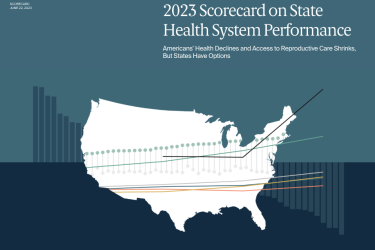
When reporting on the state of rural medical facilities, there’s more to the story than the demand for health care services. Other factors influence the survival, closure, or changes to services offered by providers in more sparsely populated areas. The economic prosperity of those regions, for instance, appears to be tightly intertwined with the type and quality of care accessible to the people who live there — who tend to be in worse health than their urban peers.
That was among the potential story threads that emerged during a presentation at AHCJ’s Rural Health Journalism Workshop 2022 in Chattanooga earlier this month. Stephanie Boynton, F.A.C.H.E., featured luncheon speaker and vice president and CEO of critical access hospitals for Erlanger Bledsoe Hospital and Erlanger Western Carolina Hospital, talked about the impact of Erlanger Health System’s acquisition of facilities in East Tennessee and Western North Carolina.
A Q&A moderated by Kaiser Health News senior correspondent Sarah Jane Tribble, who writes about the state of rural health in the U.S., followed Boynton’s presentation. Questions focused on the financial challenges that hospitals, emergency departments, and clinics face; the ways Medicaid reimbursements affect health care access in those areas; and changes corporations make when they take over facilities, including bringing in more primary and specialty care physicians and eliminating surgical procedures from their services roster.
Other topics that came up were how closures of facilities may contribute to already troubling unemployment and poverty rates, initiatives for provider residencies aimed to attract and retain physicians in the country’s less populated areas and community and employee support for the companies that take over facilities.
Here are four reporting tips and resources that we took away from Boynton’s presentation and Q&A with reporters to help you provide more context to stories:
- Address the outlook of disease trends among the population in rural areas. According to an analysis from the CDC that looked at mortality rates between 1999 and 2019, the mortality rates of the 10 most common causes of death in the year before COVID-19 ravaged the country were higher in less dense areas than in more populated ones. That trend was observed in men and women. CDC data offers story ideas about health trends in race and ethnic population groups. And agency research has shown that non-Hispanic Black and Hispanic American adults who live in non-urban communities are more likely than their non-Hispanic white peers to say that they are in fair or poor health.
- Provide economic and demographic context of the communities you are writing about. Look at reports from the Department of Agriculture’s Economic Research Service for data on population migration patterns, income data by race and ethnicity, and employment. The 2021 edition of the “Rural America at a Glance” series also includes information about broadband internet access. Think tanks such as the Brookings Institution and the Pew Research Center may also have data about social determinants of health.
- Find out about trends in other areas with a similar population and economic profile. A caveat here: state and federal agencies may have different definitions of what is considered a rural area. Interview demographers who prepare government reports to help you understand the subtleties of those distinctions. This report about the population in rural regions from the U.S. Census Bureau, addresses the definitions the agency uses in its research. The National Center for Health Statistics offers information on its website about the definition it uses.
- Ask hospital systems what makes a rural hospital, emergency department or clinic attractive to potential buyers. For-profit and nonprofit health care systems want to, at the very least, break even in their investment. What’s in it for them to buy facilities that have been in the red for decades and need major improvements in part because they haven’t kept up with routine maintenance for decades? How do population changes and disease trends affect their decisions?










